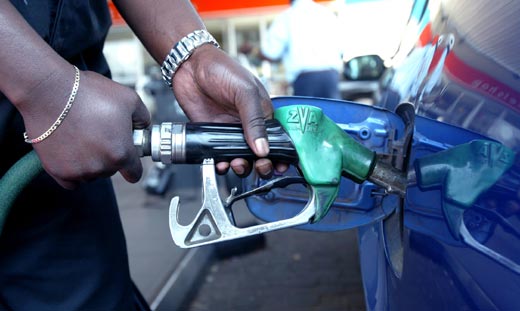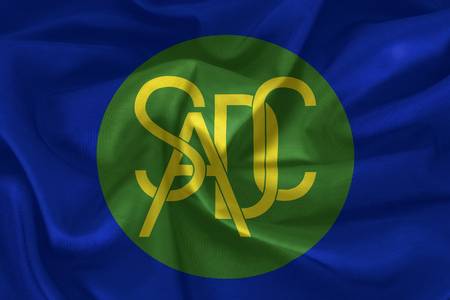Restrictive regulations choke SADC FDI
The Southern African Development Community (SADC) region has been grappling with a persistent challenge: attracting foreign direct investment (FDI).
A joint investment scorecard project by the World Bank and SADC Secretariat, supported by the EU, OECD, and others, has unveiled a stark reality: SADC member states are significantly less welcoming to foreign investors than many other regions.
“The number of greenfield FDI projects in SADC countries is three times lower than the global average,” noted Ganesh Rasagam, lead private sector specialist, finance, competitiveness and innovation at the World Bank.
“There is potential to do better,” he added, while acknowledging the variation among SADC nations. Zimbabwe received US$375,6 million in foreign investment in 2023 according to the RBZ.
In a presentation at the SADC Industrialisation Week, which ends today, Rasagam highlighted; “The good news is that the average value of the FDI in SADC countries is higher than the global average for developing countries.”
The top five sectors attracting FDI in SADC are coal, oil and gas, real estate, renewable energy and communications. The investment scorecard project analysed legal restrictions affecting FDI entry in SADC member economies, examining 22 sectors across 15 countries.
“The intention was to facilitate dialogue and exchange among the member states and of course to contribute to accelerating progress towards meeting SADC’s industrialisation and regional integration goals,” Rasagam explained.
It also aims to: “strengthen the capacity of the SADC Secretariat to monitor progress and support Member States’ efforts towards regional integration.
“The findings revealed that SADC members impose stricter regulations compared to non-SADC nations. SADC Members observe an almost three times higher score than Non-SADC countries, on average. The average score for SADC Members is 0,2 while the average score for Non-SADC countries is 0,06. Scores range from 0 (open) to 1 (closed),” the report stated.
While sectors like fisheries, transport, media, financial services and real estate faced stringent measures globally, “restrictions in other sectors are somewhat more prevalent, both in comparison to OECD and non-OECD averages,” said Rasagam.
For instance, the manufacturing sector had higher restrictions at 60 percent in SADC compared to 13 percent in OECD and 49 percent in non-OECD countries. “Overall, there is significant heterogeneity across SADC member states in terms of the incidence of restrictive measure,” Rasagam noted.
Discriminatory minimum capital requirements, limited access to local finance for foreign-owned companies and restrictions on land ownership were more frequent in SADC. Preferential treatment for domestic companies in public procurement was also widespread.
Rasagam emphasised: “A high level of regulatory restrictiveness is correlated with lower levels of FDI projects attraction and FDI inflow.” This aligns with research showing a negative impact of restrictions on inward FDI stocks.
FDI’s potential benefits include technology transfer, job creation and increased consumer spending.
FDI can complement domestic investment by enhancing human and physical infrastructure, thus giving the necessary impetus to ensure higher levels of growth to attain the Millennium Development Goals (MDGs), including poverty reduction.
Studies have confirmed that FDI generates economic opportunities, provides employment and increases citizens’ buying power and consumption. SADC’s restrictive regulatory environment hinders realising these benefits.
Speaking during the Investment Forum, which was held on Day 2 of the SADC Industrialisation Week, Finance, Economic Development and Investment Promotion Minister, Mthuli Ncube, said FDI is needed in order to promote macroeconomic convergence, financial market integration and the expansion of their capacity to participate in continental and global value chains, all of which will facilitate industrialisation.
He said attracting FDI and intra SADC investment will enhance the productive capacities of the region, promote macroeconomic convergence, integration of financial markets, as well as build capacity to participate in continental and global value chains.
“This will ensure the region transitions from exports of unprocessed natural resources primary products to processed high value goods and services,” he said. Mthuli said the major challenges facing the region to industrialise include, the lack of affordable long-term financing, macroeconomic imbalances and limited fiscal space to address gaps in economic enablers, coupled with a long-term decline in Official Development Assistance (ODA) flows.
Walter Mandeya, an analyst with Trigrams Investment, said to compete globally, the region needs comprehensive reforms to create a business-friendly climate. “By streamlining regulations and promoting fair competition, SADC can attract more FDI, boost economic growth, and improve citizens’ lives.
“SADC can become a magnet for FDI, driving economic growth and development. The challenge is significant, but the potential rewards are immense. The choice is clear: reform or continue grappling with the consequences of restrictive policies,” said Mandeya.-ebusinessweekly










